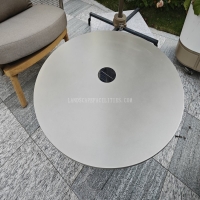Welcome to the website for landscape facilities products and knowledge.
What are the best materials for reducing the risk of cracking in freezing temperatures?
When temperatures drop below freezing, many construction materials become prone to cracking due to thermal contraction and ice formation. To mitigate this risk, selecting the right materials is crucial. Here are the top options for reducing cracking in freezing conditions:
1. Polymer-Modified Concrete: Adding flexible polymers to concrete mixtures improves elasticity, allowing the material to withstand thermal expansion and contraction without cracking.
2. Fiber-Reinforced Composites: Synthetic or steel fibers embedded in concrete or asphalt enhance tensile strength, preventing cracks from spreading.
3. Rubberized Asphalt: This material incorporates recycled rubber, providing superior flexibility and resistance to low-temperature brittleness.
4. Thermal-Insulating Coatings: Specialized coatings reduce heat loss and minimize freeze-thaw cycles, protecting surfaces like roads and bridges.
5. High-Performance Plastics: Certain engineered plastics, such as polyethylene terephthalate (PET), remain ductile even in extreme cold.
For long-lasting durability in freezing climates, combining these materials with proper installation techniques—such as expansion joints and adequate drainage—can significantly reduce cracking risks. Always consult material specifications to ensure compatibility with local weather conditions.
Related search:

Recommendation
Outdoor stainless steel table with solar-powered ambient lighting feature - excellent design.